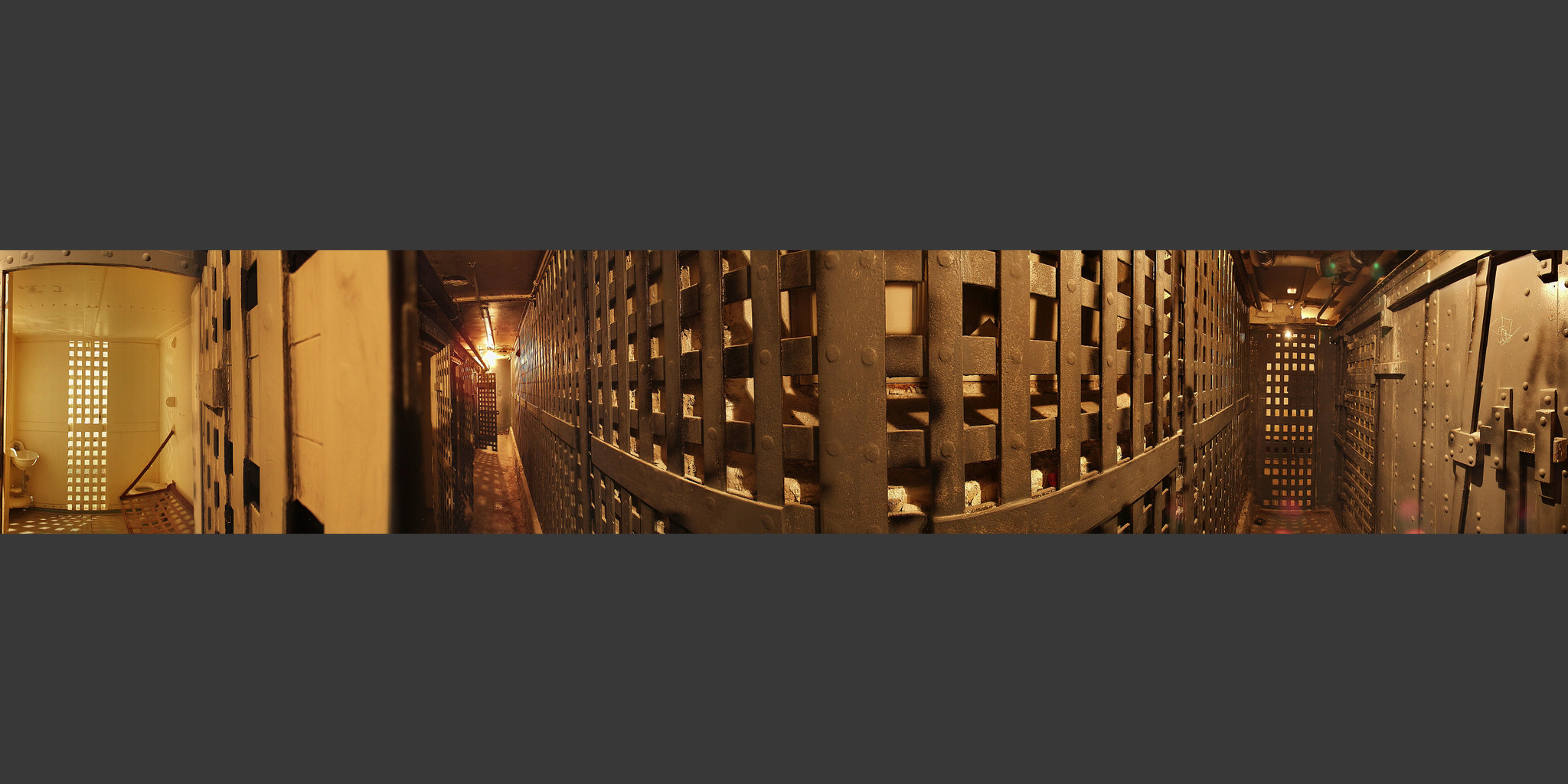Winnipeg – Vaughan Street Jail
Once home to some of Manitoba’s most notorious criminals, the Vaughan Street Jail sits mostly vacant today. When the building opened in 1881 it was known as the Eastern Judicial District Gaol and was, in many ways, an upgrade from the provincial jail that had been used before.
The dreary former Main Street jail boasted cramped cells and was once described as “a damp, dark, dismal dungeon that smells to Heaven” by the Manitoba Free Press. The Vaughan Street Jail was a departure from both this previous jail, but also a departure from other examples of prison architecture.
Traditional prison architecture was somber and bleak, but English architect Walter Chesterton shifted away from this in his design for the Vaughan Street Jail. Drawing from the style of churches during the Italian Renaissance, the jail was built to look unappealing and ominous as a visual deterrent to criminals. The three-story jail was constructed of buff brick with a limestone trim, and cost just over $61,000 to build.
Various wings separated the types of criminals kept within the jail. Lesser offenders, which often included women and children, were held in the east wing. More serious male offenders were kept in the west wing. The very worst offenders, which including those suffering from mental health issues, were kept in solitary confinement in the basement. Jail facilities, such as the kitchen, laundry, and hospital were in the south wing while the jailor and his family lived on site in the north wing.
Within a decade of the jail’s opening, structural problems began to arise. Provincial architect Samuel Hooper was hired on in 1909 to undertake a series of renovations, which included extending the south wing, removing exterior ornamentation and adding a new three-stage cupola and weathervane.
A host of prominent Manitobans have passed through the Vaughan Street Jail. Helen Armstrong and John Queen, members of the Winnipeg General Strike committee, both spent time in jail as a result of their involvement in the 1919 strike. Margaret Scott, the first public health nurse in Winnipeg, spent time in Vaughn Street attending to ill and dying female patients. Then there was Thomas Mayne Daily, whose compassion for convicted children led to Canada’s first juvenile court system.
The Vaughan Street Jail was built on the outskirts of Winnipeg at the time, but it still drew the attention of locals – who would pass by to gawk at the inmates, or, in some occasions, get a glimpse of a rare execution. There would be 13 hangings at the jail over its 53 years of operation. In 1934, the provincial jail moved to Headingly and the Vaughan Street Jail was turned into a youth detention center until 1985, when the facility closed.
Concerns about the future of the building circulated until 2004, when Heritage Winnipeg and concerned stakeholders formed the Friends of Vaughan Street Jail to advocate for the building’s preservation.
Today, though, the building is underutilized and functions only as a maintenance facility for the provincial government. The jail is only open to the public for one weekend a year, for Heritage Winnipeg’s annual Doors Open Winnipeg event. Each year, thousands of guests turn up for a chance to tour the abandoned jail. Rumours of hauntings abound in the building and volunteers with the Friends of Vaughan Street Jail put on theatrical presentations of the jail’s macabre history, and tell the stories of the some of the spirits that supposedly remain.
Advocacy for Vaughan Street Jail continues to this day – with hopes that the Province of Manitoba will commit to the rehabilitation of the building, and allow the historic jail cells in the basement to be a part of a future historical judicial museum.






 Cell
Cell
 Hells Hallway
Hells Hallway
 Holding
Holding
 Solitary
Solitary